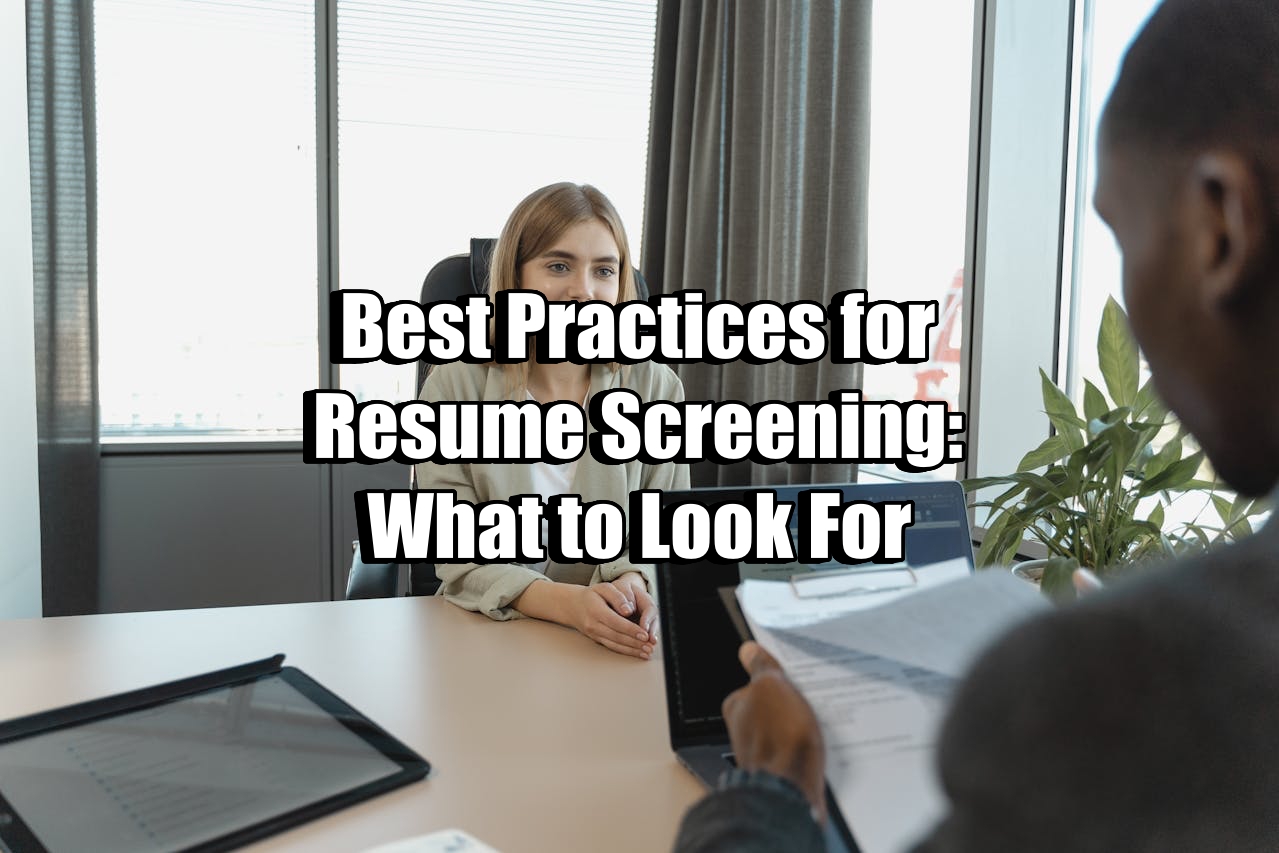Skip to content
Best Practices for Resume Screening: What to Look For
In the fast-paced world of hiring, resume screening remains a crucial first step in identifying the right candidates. Done right, it saves time, reduces hiring errors, and improves the overall quality of hires. Here are the best practices for effective and efficient resume screening:
1. Define a Clear Job Description
Start with a well-crafted job description. Define required skills, qualifications, years of experience, and essential responsibilities. This becomes your filtering baseline when reviewing resumes.
2. Prioritize Key Qualifications
Identify must-have vs. nice-to-have skills. Use this framework to quickly flag resumes that meet minimum requirements. Pay special attention to:
-
Relevant work experience
-
Technical skills and tools
-
Educational background
-
Certifications (if applicable)
3. Look for Impact, Not Just Activity
Resumes filled with duties don’t tell you much. Look for quantifiable achievements:
-
“Increased sales by 30%”
-
“Reduced processing time by 20 hours/week”
This shows the candidate delivers results, not just effort.
4. Watch for Resume Red Flags
Be alert to inconsistencies and vague descriptions:
-
Unexplained employment gaps
-
Overuse of buzzwords with no backing data
-
Frequent job hopping (unless well explained)
5. Soft Skills Signals
While hard skills matter, soft skills often determine team fit. Look for hints of:
-
Leadership or team collaboration
-
Problem-solving examples
-
Communication skills (clarity and tone of writing)
6. Customize Filters for Each Role
Avoid one-size-fits-all screening. Tailor criteria depending on the role. For example, a software developer’s resume should highlight coding languages, while a marketing manager’s should focus on campaign performance.
7. Use Technology Wisely
Applicant Tracking Systems (ATS) help organize and filter resumes, but don’t rely on them alone. Good candidates can be overlooked due to formatting or keyword mismatches. Always review top-ranked applications manually.
8. Stay Bias-Aware
Unconscious bias can cloud judgment. Remove identifiers like names, ages, or photos during the initial review if possible. Focus on qualifications and experience.
9. Shortlist with Structure
Use a scorecard or checklist to evaluate each resume against your criteria. This ensures consistency and helps justify decisions when discussing candidates with the hiring team.
10. Trust But Verify
Finally, always verify claims during interviews and reference checks. A great resume is a starting point—not the final proof.
Conclusion
Resume screening is both an art and a science. With clear criteria, structured methods, and a human touch, you can identify top candidates faster and more fairly—setting the stage for stronger hires and better business outcomes.

No responses yet